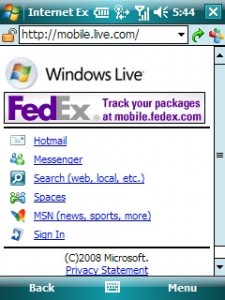There is no doubt that the mobile phone is no longer a luxury but an expected device to be carried by almost everyone. There are some 4.15 billion mobile connections today and the number is constantly growing. In absolute figures this represents a 62% penetration in the world’s population. Of course in reality some people have more than one connections (e.g. biz/private number) thus the actual penetration should be less. Despite the growth in connections, the sales of handsets have dropped, mainly due to the economic crisis - more people get connections (and a new handset) but less people from the existing users replace their handset.
By taking a more detailed look at the for 2009 sales of handsets, one can observe that “Smart-phones” are actually on the growth, both in absolute figures and even more in year-on-year market share . Still though the penetration of smart-phones is low but growing fast - for every 100 handsets sold, Gartner says ~14 are smart-phones versus 12 a year before. By looking even closer, brands like Apple and Blackberry, which only sell Smart-phones running their own proprietary software and are rich in applications, have the highest growth figures which can be considered as an indication that people tend to not just buy a smart-phone but a purpose made device that can do X,Y and Z using a specific approach and utilisation of the screen and modes of interaction.
In our opinion the mobile screen is what is actually becoming a key medium of communication beyond the voice calls. Even on standard phones, the screen no longer just showw the incoming or outgoing number but shows pictures, videos, browses the web, plays games and becomes a companion at work, at times of loneliness or fan. Just to give a perspective of the potential of the mobile screen, the PCs installed today globally are just above the 1 billion figure and the number of those connected to the Internet is much lower, although Internet usage penetration is ~25%, i.e. some 1.6billion people. The computer software and internet industries are massive. Imagine how fast the mobile application and Internet business can grow.
The question thus becomes whether the mobile industry should adopt a new paradigm or imitate the PC world. Should the mobile industry develop its own internet or adopt to the existing . In our opinion mobility is a separate revolution and not an evolution of the ÏT and PC world. Even if the 2 ‘worlds’ do interact (yes, a note can be sent from a phone and received on the PC and vice versa or a folder or address book can be synchronised on both systems) they should not serve the same purpose or adopting the same user interface designs or application structures. The mobile phone is not a replacement to the PC or an equivalent alternative. Our main argument comes by comparing the mobile screen to a PC screen. Actually its about comparing 2 to 3.5 inches screen diagonal of a smart phone to the 10-15 inches of a laptop computer and 15 to 22 inches of a desktop PC. The same content can fit a laptop screen and a desktop PC screen, probably at different resolution, but there no way to fit that content or design on a mobile phone screen. Its all about the approach and strategy behind the deployment of applications and content.
In our opinion the future of the mobile screen is all about treating it as a valuable real estate. Fill a 3 inches screen with scroll bars, advertising banners, pop up windows, icons and menus and you are left with no actual space for the actual content the user is aiming for - isn’t that what we get on our PC screen? Whatever found success on the PC based Internet simply does not fit on a mobile screen. The future of the mobile screen is still pending a revolution and this is a golden opportunity for new start-ups and creative minds that are hostages of their dominance in the PC world.
